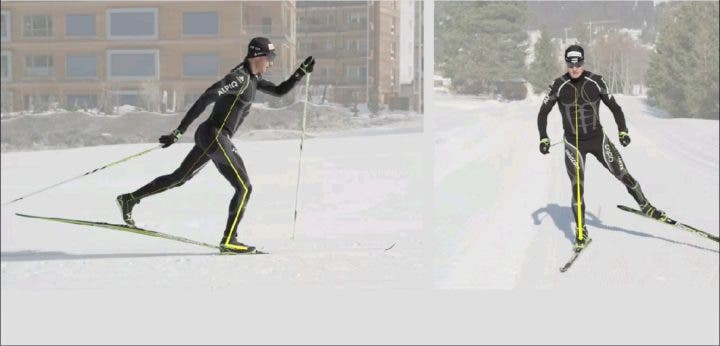In cross-country skiing, the aim of the skier is to create the greatest possible imbalance between propulsive and opposing forces along the course during the course of a race. In general, greater imbalance leads to higher speed and faster travel time. Let’s see what are all the forces that intervene in this sport, how they intervene.
What forces are involved in cross-country skiing?
There are several forces that the skier must counteract and overcome to create forward motion, as follows:
- Work against gravity on ascents and during the stride cycle.
- Air resistance .
- The friction of the ski sole.
- The translation and rotation of body weight .
- The kinetic energy changes during the stride cycle.
How do forces intervene in cross-country skiing?
Previously, it has been suggested that opposing forces (resistance) affect the skier during skiing and that all forces are related to body mass. Therefore, a skier with a higher body mass should generate higher propelling forces compared to a lighter skier to achieve the same speed, for example on uphill terrain. On the other hand, a skier with more body mass has an advantage when it comes to transforming potential energy into kinetic energy on the descents .
On the other hand, the forces of the skeletal muscles are transferred through the skis and poles to the snow to achieve propulsion, while the potential for generating force is related to the cross-sectional area of the skeletal muscle. However, the proportion of the muscular forces generated that contributes to the propulsion forces depends on the efficiency of the skier’s movement pattern in the specific sub-technique.

What energy is used during cross-country skiing
A prerequisite for the production of energy by the muscles is the availability of ATP . In order to continuously generate the high propulsive forces necessary to achieve displacement, the rapid synthesis of ATP by the muscles that exert the movement is essential. This requirement can be increased up to 400 times during exercise compared to skeletal muscles at rest.
Physiological demands during cross-country skiing
In cross-country skiing, in sprinting races, which generally last 2 to 4 minutes, the proportion of energy derived from aerobic processes ranges from 50-70% (that is, between a 50 to 30% contribution energy is derived from anaerobic processes ); while the value corresponding to the energy contribution for distance races (5 to 50km), with a ski time that can be from 13 minutes to more than 2 hours, ranges from 90 to 99%, by aerobic processes .
This difference in aerobic energy contribution indicates that there is a potential difference in physiological demands between the disciplines of speed and distance.
How is the aerobic capacity of the skier evaluated?
As we have seen, the aerobic capacity of a skier of any discipline of his sport is fundamental, so it is necessary to evaluate it to determine his performance. For this, it is necessary to analyze the maximum oxygen consumption ( VO2 max ) in the laboratory at different intensities and with different sub-techniques.
In elite or professional skiers, the highest VO2 max values have been reached using the classic technique (alternating stride or diagonal stride), while the maximum oxygen consumption for the other sub-techniques is lower than the VO2 max. actual and is generally recorded as maximum oxygen consumption relative to VO2 max.
Conclution
The factors that determine performance in skiing are very difficult to measure since it is a sport in which conditions can change in minutes. However, it is necessary to make the effort to carry out these measurements since science applied to sport shows that this is the way to go to seek high performance in our athletes.
References
- Akagi R, Kanehisa H, Kawakami Y, Fukunaga T. Establishing a new index of muscle cross-sectional area and its relationship with isometric muscle strength. J Strength Cond Res. 2008; 22: 82-87.
- Bassett DR, Jr., Howley ET. Limiting factors for maximum oxygen uptake and determinants of endurance performance. Med Sci Sports Exerc. 2000; 32: 70-84.
- Häkkinen K, Keskinen KL. Muscle cross-sectional area and voluntary force production characteristics in elite strength-trained and endurance-trained athletes and sprinters. Eur J Appl Physiol Occup Physiol. 1989; 59: 215-220.
- Tonkonogi M, Sahlin K. Physical exercise and mitochondrial function in human skeletal muscle. Exerc Sport Sci Rev. 2002; 30: 129-137.